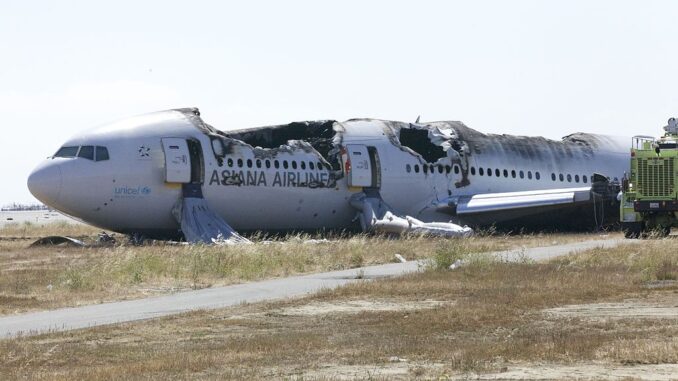
The conditions for landing the Boeing 777 safely should have been perfect, according to the National Transportation Safety Board.
The sky over San Francisco was clear, the wind negligible and the pilot of Asiana Airlines Flight 214 had 11,000 feet of runway in front of him.
But there was a problem. The runway’s automatic landing aids were out of service because of construction on that July 2013 day, which meant pilots had to land using old-fashioned visual and manual skills.
They had been doing it all day, but the Asiana Airlines pilot later told NTSB investigators he had been nervous about attempting to land using “stick-and-rudder” flying skills, and the ensuing crash killed three people and injured nearly 200, the Associated Press reported at the time.
The pilot’s hesitancy and apparent inability to fly without automated assistance didn’t surprise Rick Eriksen, an experienced aviator and one of the founders of Aviation Consulting 360, a firm that specializes in assisting businesses with their aviation needs.
Eriksen says he believes advances in airplane automation may have reached a point where they are starting to hinder rather than help safety, with pilots so dependent on the technology that they fail to develop real flying skills.
Pilots also become so fixated on high-tech computer equipment that they can fail to notice hazards in clear view right outside the window, he says.
“In my opinion, most technology is no longer adding anything new in the way of meaningful advancements,” Eriksen says. “Planes fly the same way they flew back when I was flying in the 1970s, ’80s and ’90s. And we made it work with much more reliability than they do with today’s over-the-top automation.”
Eriksen says he loves technology and is far from a Luddite. He understands the benefits that technology affords everyone every day and the improvements it brought to aviation.
But the rise of automation also comes with downsides, he says, and changes in attitudes and training may be in order for the aviation community. Among his suggestions for improving the situation:
- Aviators should not get caught up in the latest high-tech fad. To increase their profits, equipment manufacturers overwhelm the marketplace with automation that, in most cases, is redundant and meaningless, not to mention just plain expensive. A flight-management system is not the same as an iPhone, Eriksen says, so tweaks and added features that exist just for the sake of creating demand for the latest, new-fangled version of the product don’t cut it.
- Pilot training needs greater focus on manual skills. Pilots essentially are becoming computer operators, with the computers often not only flying the aircraft but also making decisions for pilots, Eriksen says. That is having a direct and exponentially negative effect on basic flying skills, he says. Eriksen isn’t the only one who has raised this concern. Christopher A. Hart, the acting chairman of the NTSB, said in an October speech that automation of aircraft and other transportation vehicles has contributed to decreasing professionalism, leading to accidents.
“Think of it this way,” Eriksen says. “A musician must practice every day. A baseball player must practice every day. Heck, even a clown has to practice. So why do pilots get to push buttons on an auto pilot and consider that flying? That is not flying.”
But those pilots can record in their log books that they flew a certain number of hours, when in reality “they got about the same amount of hands-on flying practice as the passengers,” he says.
“Maybe it is time for the FAA to start to begin to differentiate between flying time and computer time,” Eriksen says. “One is a serious business that can get you killed. The other is just a game that only gets serious when the computer fails, and by then it is too late to practice.”


